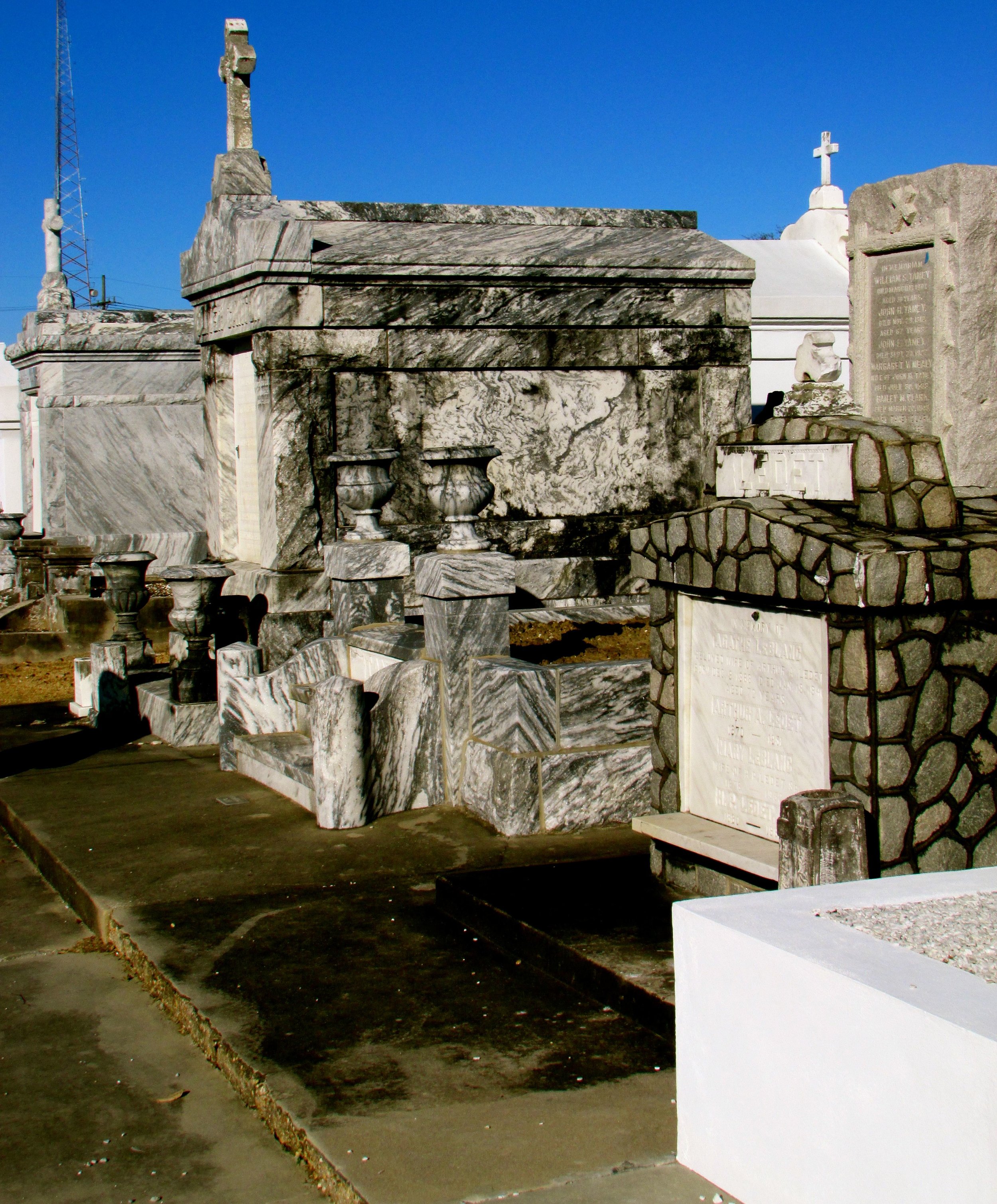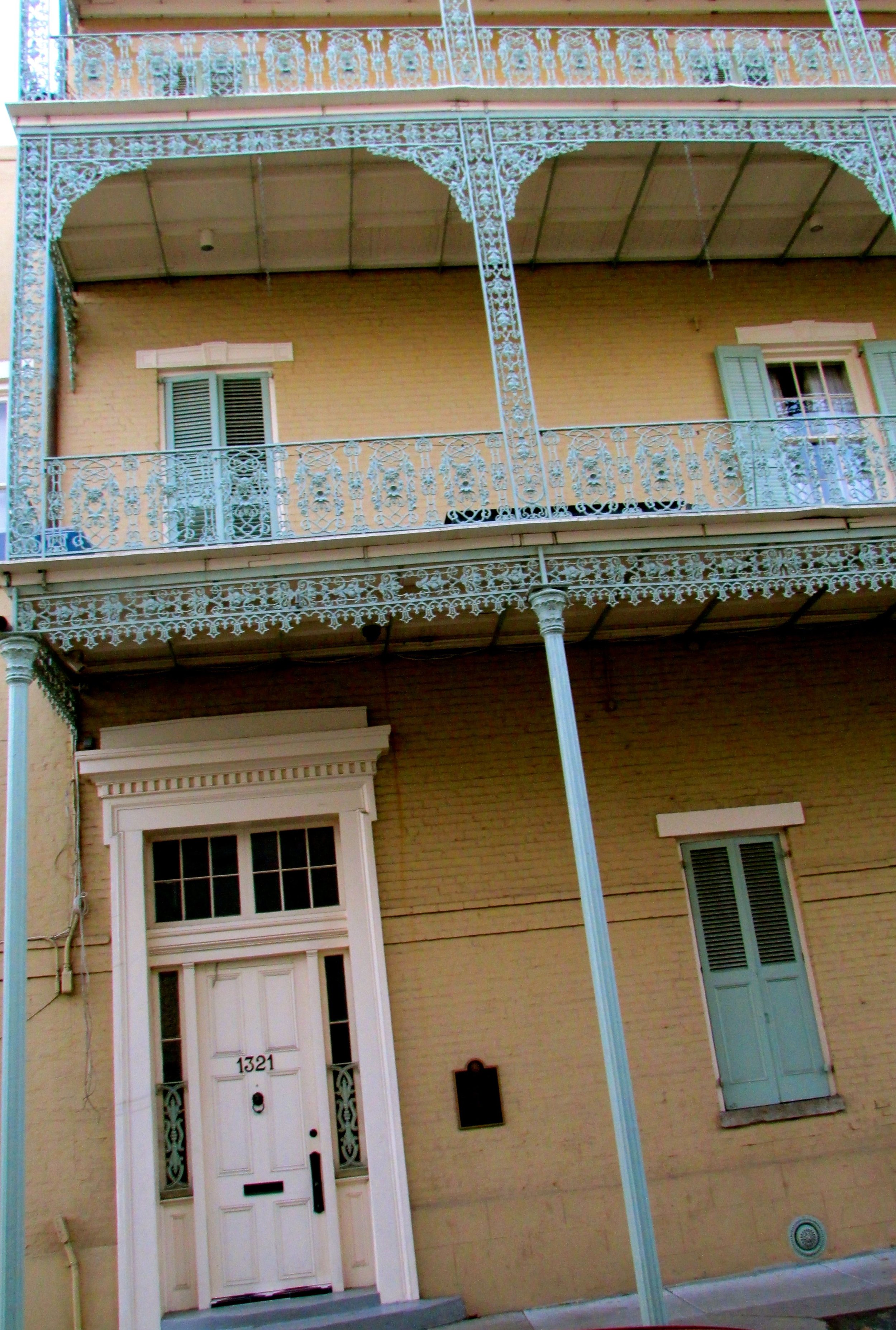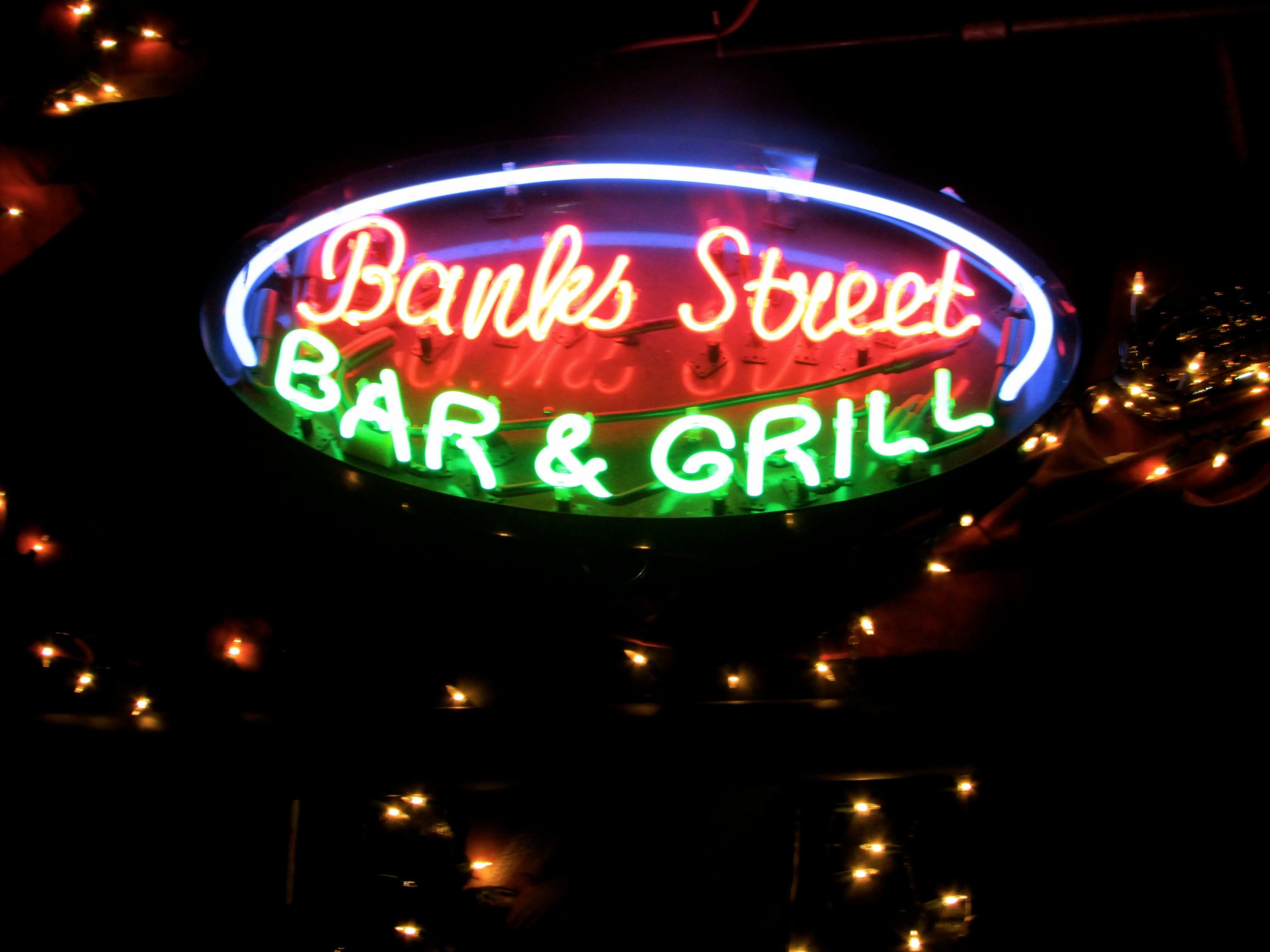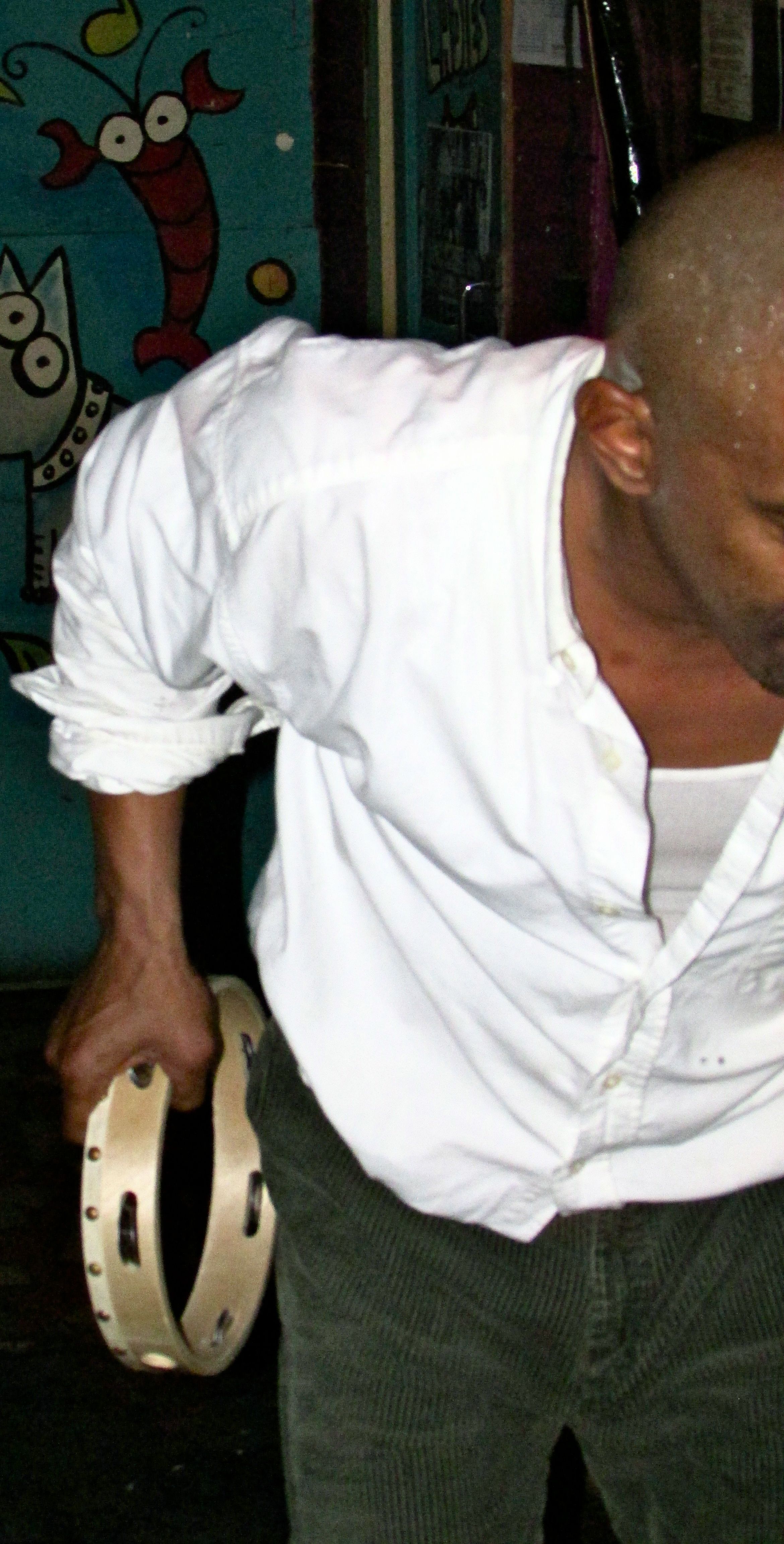Love Is: Phoenix Eden
https://www.youtube.com/watch?v=HzK4Ze-oZkQ&t=41s
https://www.youtube.com/watch?v=HzK4Ze-oZkQ&t=41s
Mardi Gras, for many, means a chance to travel to New Orleans and indulge in a certain kind of debauchery that is generally frowned upon in the rest of the world. There is something exciting to tourists about being able to drink alcohol openly and wander down infamous Bourbon Street.When we look at Mardi Gras historically, there is a blatant foundation of racism and classism. You see this in the high membership fees for parading krewes and veiled white men who often selectively (see racially-selective), throw beads at the crowds who yell at them to, "Throw me something, mister." Black participation in Mardi Gras was initially reserved for the position of flambeaux; men who carried torches for miles to light parade routes. The main Mardi Gras routes follow St. Charles and Canal Streets, and black social clubs, most notably the Zulu Social Aid and Pleasure club, were forced to parade on back streets of black neighborhoods. Black social clubs, most notably the Zulu Social Aid and Pleasure Club, were not allowed to parade on main routes, like Saint Charles and Canal Street until 1968. Up until then, black krewes were contained to routes along back streets of black neighborhoods.To counter this exclusion, New Orleans' black community did what most oppressed groups do; created something that is now ingrained in the fabric of the city's culture. In black neighborhoods in Uptown and Downtown New Orleans, parading men created gangs called Mardi Gras Indians. Similar to West African secret societies, these gangs are shrouded in secrecy and ritual. Outwardly, the suits, chants and music pay homage to the African and Indigenous roots of the New Orleans black population, with ritualized hierarchal structures. So while Mardi Gras holds great historical and cultural weight for the city of New Orleans; the history of Mardi Gras Indians tells a greater story of black perseverance and influence.
In 2014, I interviewed a man called Spy Boy Honey, a member of the oldest Mardi Gras Indian gang, The Creole Wild West. We spoke candidly about his time away from New Orleans after Hurricane Katrina. The thing that stuck with me the most was when Spy Boy Honey reminisced about his time away from the city, "I left New Orleans after the storm and didn’t listen to Mardis Gras music for almost nine months. Then one day I heard it and I just started crying. I had to come home, so I came on back to New Orleans." This spiritual reaction and connection to Mardi Gras Indian culture, is also parallel to African secret societies in that it is not something you choose, it is something that chooses you.Spy Boy Honey's name, is indicative of the ritualized hierarchy of Mardi Gras Indians. Every person plays their part. Since black people were confined to their own neighborhoods, it was expectant that the paths of different gangs would cross. It was the role of spy boy, to spy on and be on the lookout for other parading Indians. This tradition is archived in Sugar Boy Crawford and His Cane Cutters 1953 single, Iko, Iko, where the lyrics tell the meeting of two rival spy boys, with one threatening to burn the flag of the rival gang's flag boy. The flag boy comes next in line and carries the banner of his gang. This mirrors the European procession, in which masked men carrying banners precede the coming floats. Penultimate is the Wild Man. He is the one who clears the paths for and gives compliments like, "You so pretty.", to his Big Chief. Lastly, comes the Big Chief, the leader of the gang and the one who decides which route to take.The tradition goes something like this: a gang searches for a route to parade, their spy boys walk ahead in search of any rival gangs. As the gangs parade, should they pass one another it is at the discretion of the Big Chief whether they continue to parade, or meet face to face. This meeting, or masking, was often used to violently settle personal disputes. The name of the song, Jock-A-Mo and the repeated Iko, Iko are reiterations of Indigenous battle and victory cries. Now the only battle and weaponry are the suits, heavy with intricate beadwork and feathered headdresses. Every member spends a year hand making his suit, so these maskings are the time for them to show off their hard work.
We dress this way to pay homage to the Native American tribes, like the Choctaw, who took us in when we ran away. . . All the beading and feathers we use, we use to pay tribute to them. - Spy Boy Honey
Sundays in New Orleans hold heavy significance for its black population. New Orleans handled its enslaved populations uniquely; in that they allowed them a day of rest. On Sundays, slaves were able to congregate in Congo Square, while European slave owners attended mass. Some enslaved people and freed people of color were also able to sell goods and keep profit. It is in Congo Square that black people created and exchanged rhythms and dances. This is where jazz music and second lines were created. Second lines are in short, a neighborhood march. In the first line is the brass band. Brass bands are a New Orleans musical tradition steeped in military colonialism and black innovation with brass instruments. The second line is formed by the people, who follow the band throughout the city, dancing behind.For Mardi Gras Indians there is Super Sunday. A masking that generally occurs on the third Sunday of March. It is a day that honors St. Joseph's Day, as an homage to the Sicilian community who celebrate this saint and who gave refuge to black New Orleanians. This day is perhaps larger than Mardi Gras for the Indians, as it gets down to the very roots of its tradition. There are no masked men looking down at your from above, and you do not get beads. What you do receive is an insight into a hundred year tradition. Super Sunday is an exhibition of the tradition of what black people do greatly; creating as a means to transcend physical, mental and spiritual suffering.So as you plan your next trip to New Orleans, I highly suggest that you travel outside of Mardi Gras season. If you have never felt the overwhelming spirit of black joy, come to New Orleans on a Sunday.Song: Jock A MoArtist: Sugar Boy Crawford and His Cane CuttersAlbum: Jock A MoReleased: 1953Writer: James "Sugar Boy" Crawford
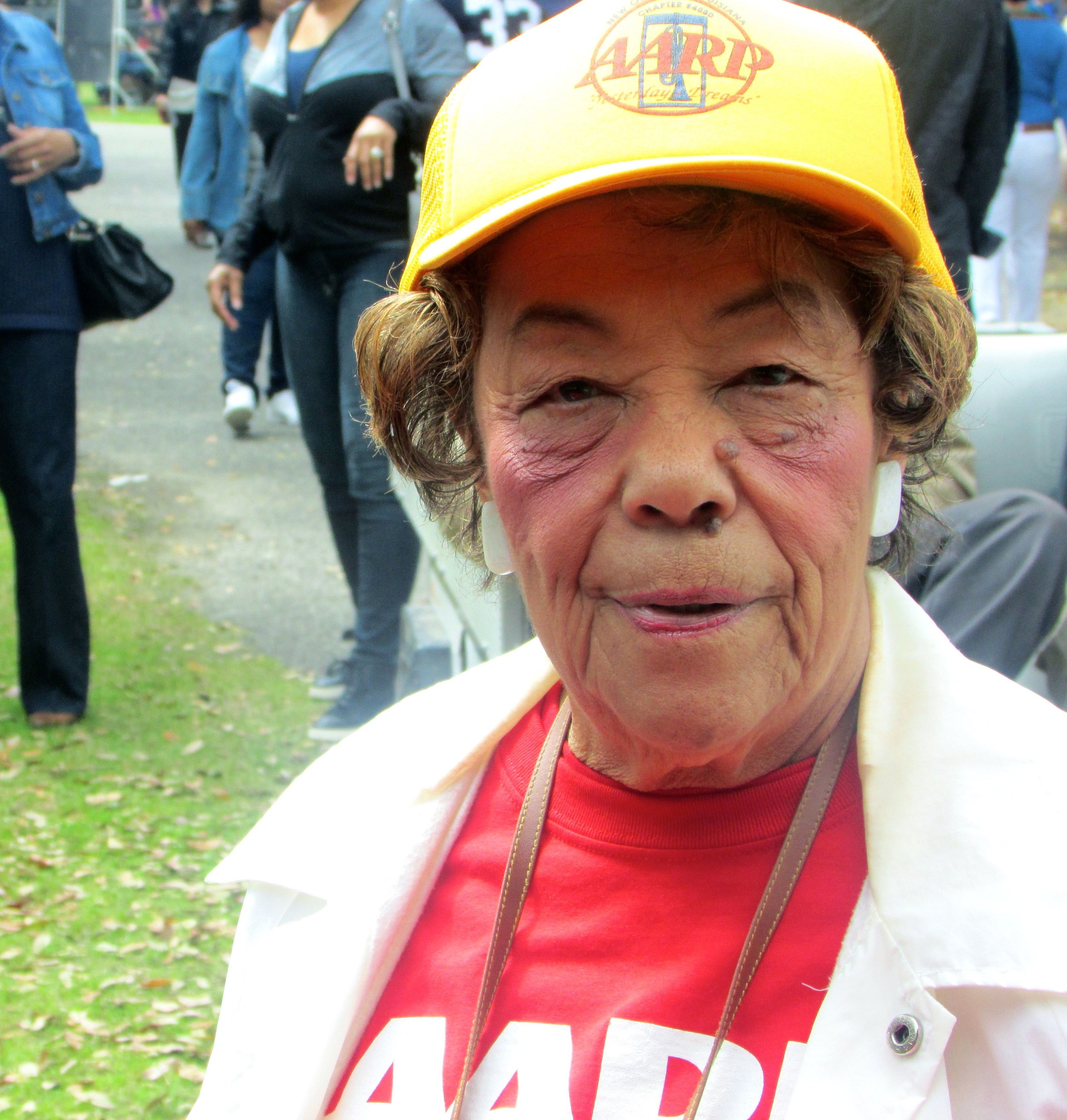
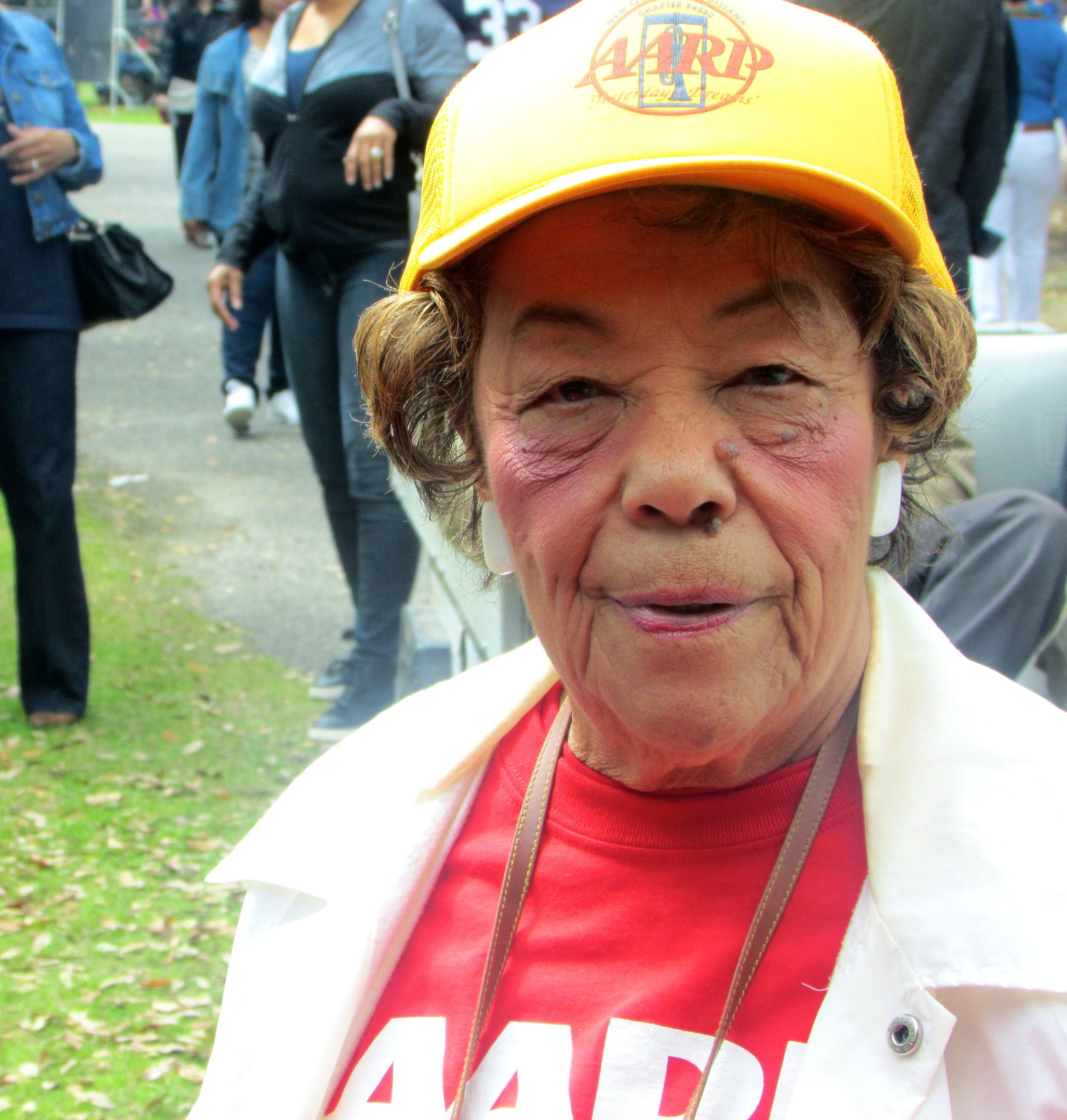 Name: Mrs. Lois RicardHometown: St. James Parrish, LouisianaAge: 86Age You First Fell in Love: 19Love Is: Well, in those days everybody was in love with everybody.On Love: I was married at 19, in 1947. In those country towns all the families know all the other families. He told his mother he wanted to marry me. He wanted to marry me because he knew his faults, he was thrifty and I was a miser. When we would go out, we went out with families. See, we were family oriented, we could go on picnics and ride horses. There were big farms and we were very family oriented; I'm the only one living now. I never had any children.On Racism: Being in a country town, you didn't feel it because we had a bond. When you came out to town, you met them like they were your family. You went to the levee [to sit] and we didn't feel it. You knew it was there, but the [older generations], they didn't hate, they did it because it was a tradition. There was always helping going on and people shared their fruits. It wasn't integrated but all of them didn't hate because they were too giving, we had a bond.On Life: I've been blessed to be here this long and I'm anchored in my faith. I have everything a poor person could need in this world. You've got to value your youth and your knowledge. Our race needs a lot of help. If the younger ones would listen, they would have power. They don't see what's good for them, all they want to do is keep up with The Jones'. All these young girls want to be Madam Queen and ain't nobody even paying attention to you. Degrees don't mean a thing, but use your intelligence.
Name: Mrs. Lois RicardHometown: St. James Parrish, LouisianaAge: 86Age You First Fell in Love: 19Love Is: Well, in those days everybody was in love with everybody.On Love: I was married at 19, in 1947. In those country towns all the families know all the other families. He told his mother he wanted to marry me. He wanted to marry me because he knew his faults, he was thrifty and I was a miser. When we would go out, we went out with families. See, we were family oriented, we could go on picnics and ride horses. There were big farms and we were very family oriented; I'm the only one living now. I never had any children.On Racism: Being in a country town, you didn't feel it because we had a bond. When you came out to town, you met them like they were your family. You went to the levee [to sit] and we didn't feel it. You knew it was there, but the [older generations], they didn't hate, they did it because it was a tradition. There was always helping going on and people shared their fruits. It wasn't integrated but all of them didn't hate because they were too giving, we had a bond.On Life: I've been blessed to be here this long and I'm anchored in my faith. I have everything a poor person could need in this world. You've got to value your youth and your knowledge. Our race needs a lot of help. If the younger ones would listen, they would have power. They don't see what's good for them, all they want to do is keep up with The Jones'. All these young girls want to be Madam Queen and ain't nobody even paying attention to you. Degrees don't mean a thing, but use your intelligence.
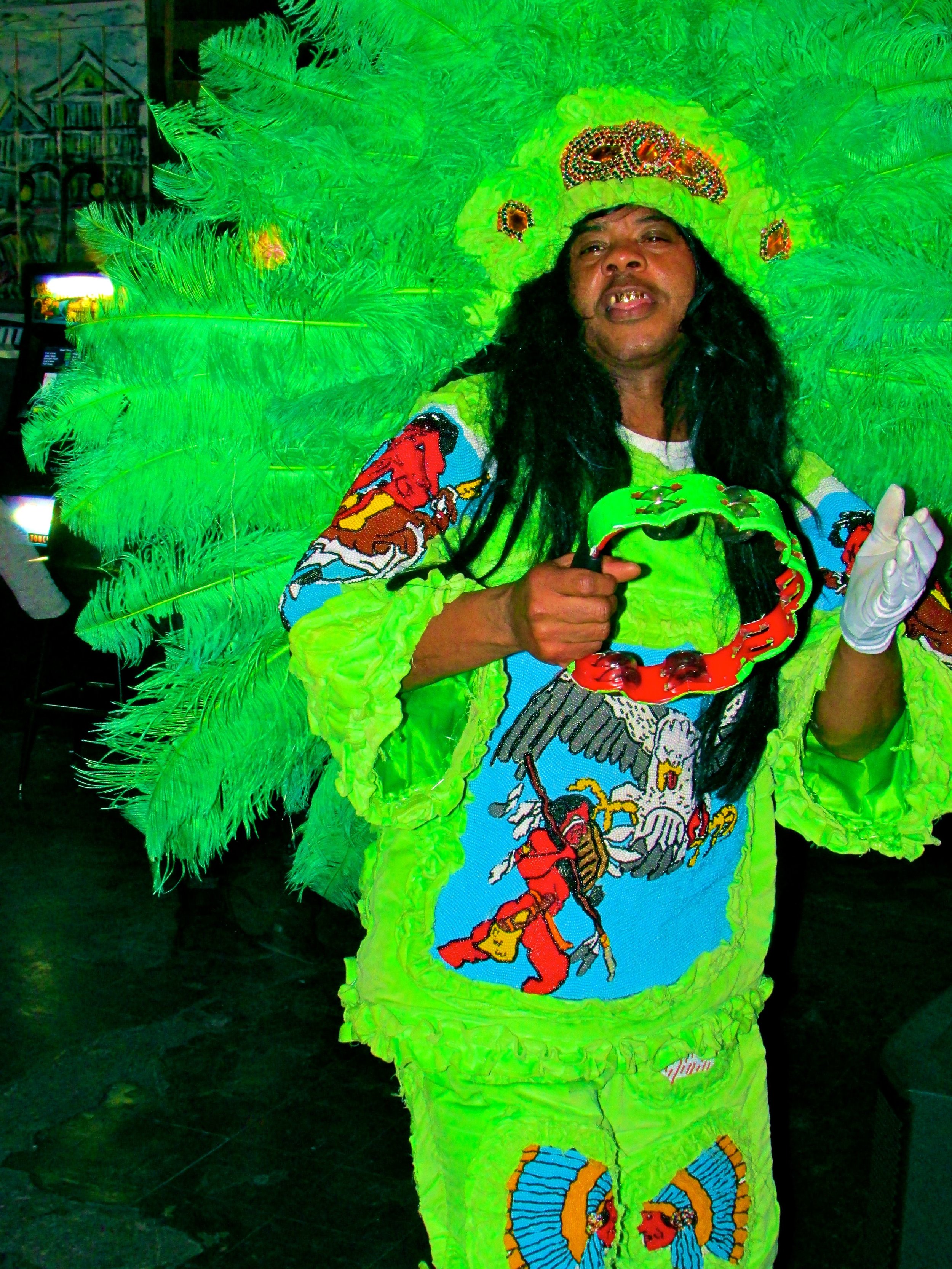
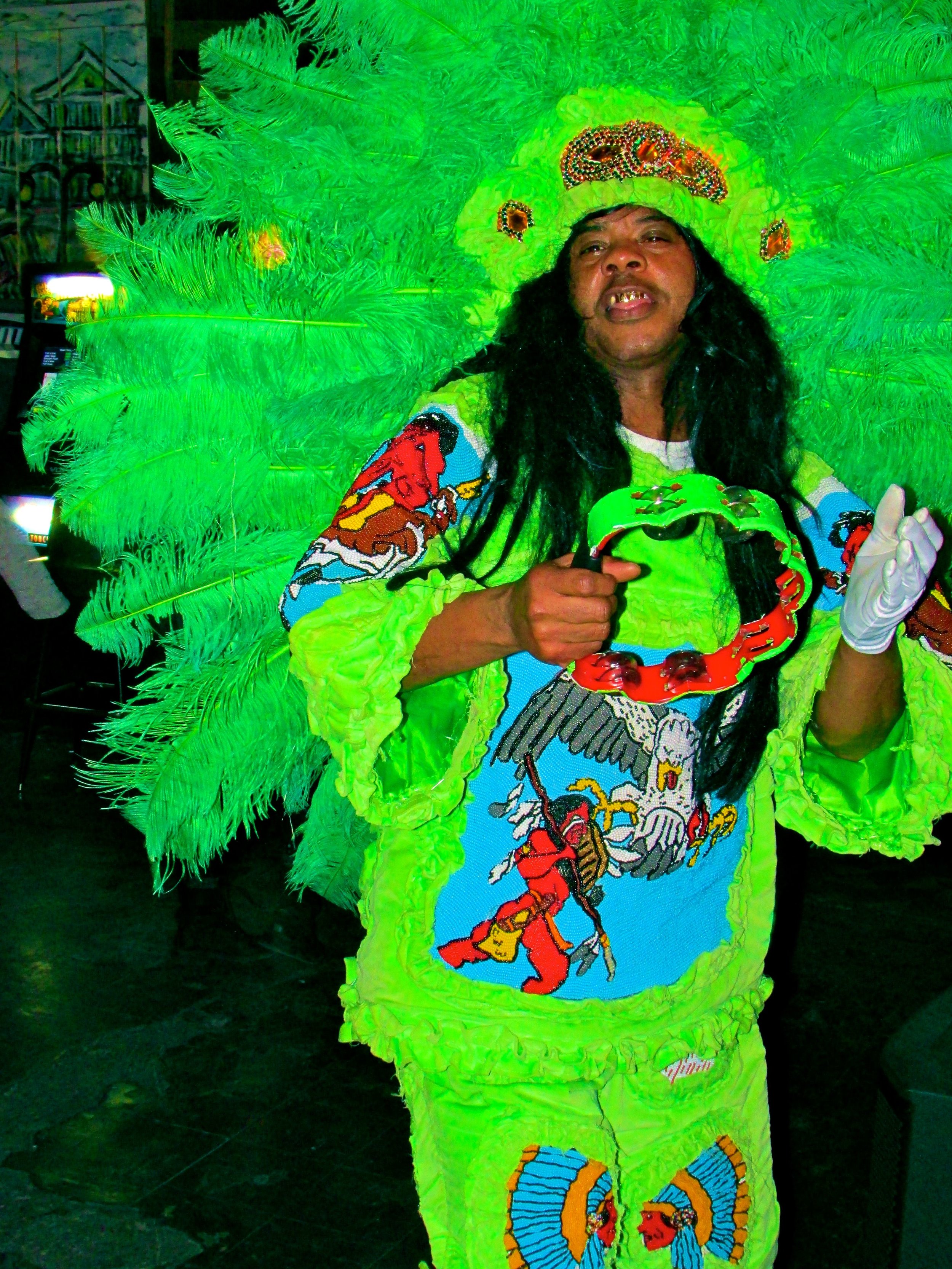 Name: Spy Boy HoneyHometown: New Orleans, LouisianaAge: 48Age You First Fell in Love: 37Love Is: When I'm happy to see them and being in their company is enough.It is my first night in New Orleans after almost two years and I am happy to be there. My sister and I venture to a small bar on Banks Street, aptly named Banks Street Bar and Grill, where we are meeting a friend of hers. Inside of the small catty-cornered building is a band of five men onstage. The lead singer, dressed in bright green feathers and beads, is a man called Spy Boy Honey. The music is beautiful. The kind you hear only in New Orleans and the kind that always makes me feel at home when I'm there. During intermission we stand outside in a small circle talking."You know, black men weren't allowed to participate in Mardi Gras.", Spy Boy says as we step away from the group. I'd told him the premise of my research and wanted to learn a bit about him and the influence New Orleans had on his life. He proceeds to give me a wonderful history stretching almost two-hundred years. "Slaves weren't allowed in churches, so their masters would leave them in Congo Square every Sunday, and there were exchanges of rhythms and beats, that is why second lines happen on Sundays, it's how it's always been done." For those of you who have never been to New Orleans, second lines are a traditional funeral processional or festive march of sorts; with a brass band leading and a "second line" formed behind them, with either caskets, people dancing, handkerchiefs or parasols in hand.Spy Boy is a member of The Creole Wild West, the oldest documented Mardis Gras Indian gang in New Orleans, "We call them gangs or tribes, it's almost like a cult society, where you learn things that no one else would know.", he goes on about Mardi Gras Indians. "We dress this way to pay homage to the Native American tribes, like the Choctaw, who took us in when we ran away. That's why we call Mardi Gras music Indian music. All the beading and feathers we use, we use to pay tribute to them. We spend all year sewing and Mardi Gras is when we get to show what we've done."The two things I love the most about Spy Boy are how much breathing history lives in one man and his love for New Orleans. "I left New Orleans after the storm and didn't listen to Mardis Gras music for almost nine months. Then one day I heard it and I just started crying. I had to come home, so I came on back to New Orleans." Mardis Gras to most is merely a chance to be belligerently drunk on Bourbon Street; but for Spy Boy, who has been a member of The Creole Wild West since he was six, Mardis Gras is his heirloom. It is the purest connection he has to his ancestors. He is a direct descendant of men who created a culture out of their rejection; a culture that is now a prominent face of New Orleans. Spy Boy Honey in his continuation of such traditions is their living vindication.
Name: Spy Boy HoneyHometown: New Orleans, LouisianaAge: 48Age You First Fell in Love: 37Love Is: When I'm happy to see them and being in their company is enough.It is my first night in New Orleans after almost two years and I am happy to be there. My sister and I venture to a small bar on Banks Street, aptly named Banks Street Bar and Grill, where we are meeting a friend of hers. Inside of the small catty-cornered building is a band of five men onstage. The lead singer, dressed in bright green feathers and beads, is a man called Spy Boy Honey. The music is beautiful. The kind you hear only in New Orleans and the kind that always makes me feel at home when I'm there. During intermission we stand outside in a small circle talking."You know, black men weren't allowed to participate in Mardi Gras.", Spy Boy says as we step away from the group. I'd told him the premise of my research and wanted to learn a bit about him and the influence New Orleans had on his life. He proceeds to give me a wonderful history stretching almost two-hundred years. "Slaves weren't allowed in churches, so their masters would leave them in Congo Square every Sunday, and there were exchanges of rhythms and beats, that is why second lines happen on Sundays, it's how it's always been done." For those of you who have never been to New Orleans, second lines are a traditional funeral processional or festive march of sorts; with a brass band leading and a "second line" formed behind them, with either caskets, people dancing, handkerchiefs or parasols in hand.Spy Boy is a member of The Creole Wild West, the oldest documented Mardis Gras Indian gang in New Orleans, "We call them gangs or tribes, it's almost like a cult society, where you learn things that no one else would know.", he goes on about Mardi Gras Indians. "We dress this way to pay homage to the Native American tribes, like the Choctaw, who took us in when we ran away. That's why we call Mardi Gras music Indian music. All the beading and feathers we use, we use to pay tribute to them. We spend all year sewing and Mardi Gras is when we get to show what we've done."The two things I love the most about Spy Boy are how much breathing history lives in one man and his love for New Orleans. "I left New Orleans after the storm and didn't listen to Mardis Gras music for almost nine months. Then one day I heard it and I just started crying. I had to come home, so I came on back to New Orleans." Mardis Gras to most is merely a chance to be belligerently drunk on Bourbon Street; but for Spy Boy, who has been a member of The Creole Wild West since he was six, Mardis Gras is his heirloom. It is the purest connection he has to his ancestors. He is a direct descendant of men who created a culture out of their rejection; a culture that is now a prominent face of New Orleans. Spy Boy Honey in his continuation of such traditions is their living vindication.

Name: Wayne MannsHometown: Atlantic City, New JerseyAge: 58Age You First Fell in Love: I first fell in love when I was one years old with my mother, it was love at first suckle and my Grandma Pudding, but if you mean in the romantic sense, I was thirteen.Love Is: Love is giving.I also met artist Wayne Manns in Jackson Square, he was dancing to the brass band and selling his art. As we talked, he pulled a sketchbook out of his bag and began to draw me as we spoke. He'd just come back to America from studying art in Brazil and Cuba before that. I asked him what Cuba was like, as I've always been interested in Cuban history. We talked a bit about the African influence on Cuban art and music. When I asked him his definition of love, he burst out into a stream of conscience, speaking fluidly as he continued to sketch me:"I love my Grandma Pudding, I painted her, her portrait is over there (he points to a framed painting sitting against a wall). I always thought love was about getting, I learned this last week (he smirks as he looks up from his sketch) that love is about giving energy, time, talent. My music and my paintings are all about love, love of black folks. Invisible Man made me fall in love. Coltrane's My Favorite Thing makes me think of love. I've learned to not follow love, but to follow my heart, to not take any hostages. Love is making sure that I learn as much as I teach."

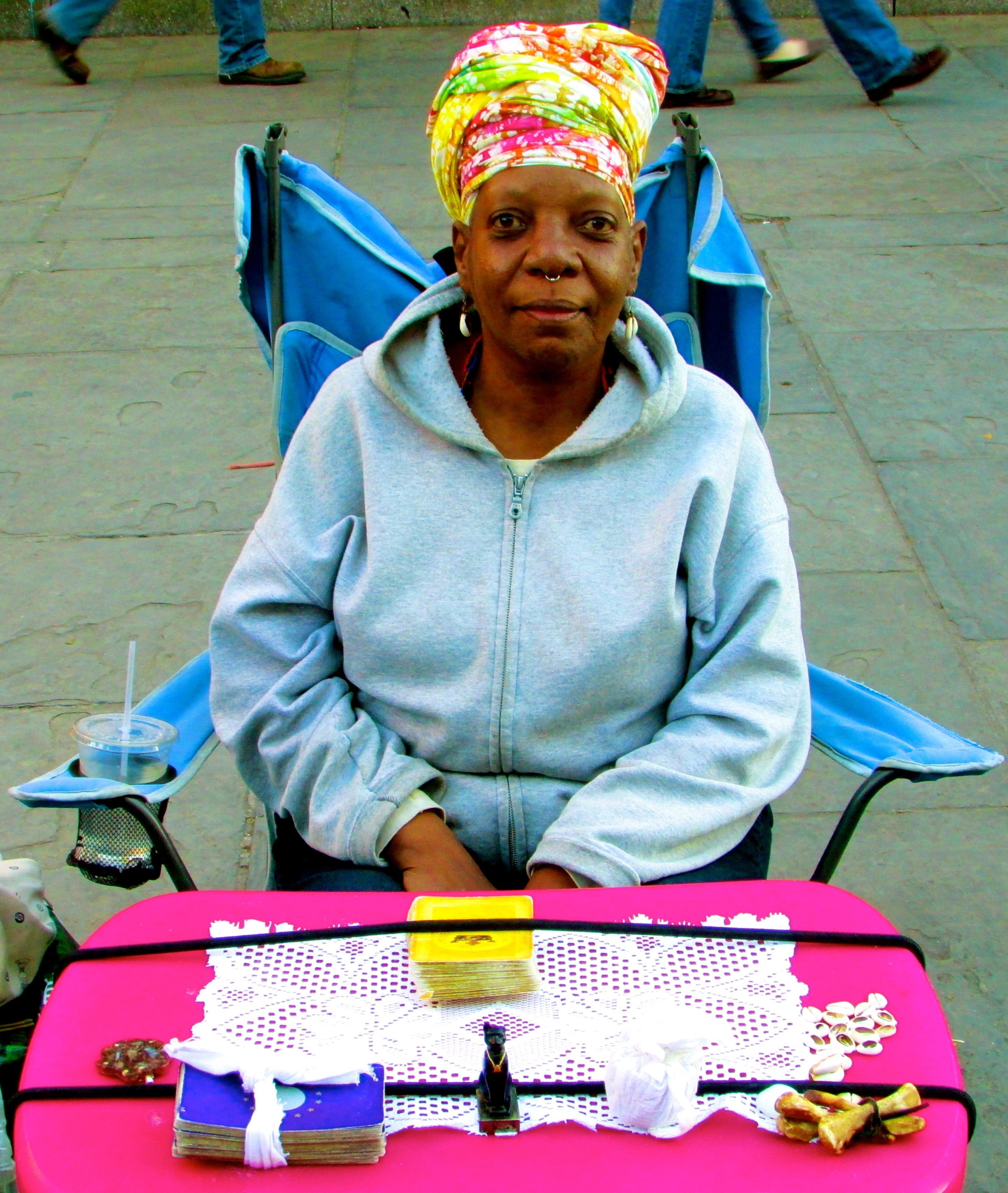 Name: Mama E.Age: 56Age You First Fell in Love: 9Hometown: Savannah, Georgia "But the spirits brought me to New Orleans, they told me they'd take care of me if I took care of them, and they have."Love Is: Love is who loves you.Mama E. was cool. She had a very fun spirit about her and large, somewhat sad eyes. We met her while in Jackson Square and learned that her father was from Benin, "My mother's people are from St. Thomas." At some point in conversation, my sister asked if she ever saw spirits, to which she replied, "Yes, I see some of our ancestors. He was standing on a corner and in chains, they were around his feet and around his neck. I asked him if there was any problem, he asked for fruit and gin. Spirits always want gin. So I went home, ate fruit and drank gin for him." We ask if she learned his name, "Yes, it was Domi-something, it wasn't quite Dominique, but a variation. He was very tired and hungry."Side Note: I believe in spirits, so Mama E saying the spirit asked for gin, makes sense to me. When we were younger, my father, who is from Ghana, would take us outside every once in a while to perform libations. Libations, are in the most basic sense, a drink offering and what we see in the African Diaspora when drinks are poured for the deceased. There would always be a handle of gin, with roots soaking in it, to offer to the ancestors whose name he'd call. We'd all take a sip and he would pour the gin on the ground three times to share with those who came before us.
Name: Mama E.Age: 56Age You First Fell in Love: 9Hometown: Savannah, Georgia "But the spirits brought me to New Orleans, they told me they'd take care of me if I took care of them, and they have."Love Is: Love is who loves you.Mama E. was cool. She had a very fun spirit about her and large, somewhat sad eyes. We met her while in Jackson Square and learned that her father was from Benin, "My mother's people are from St. Thomas." At some point in conversation, my sister asked if she ever saw spirits, to which she replied, "Yes, I see some of our ancestors. He was standing on a corner and in chains, they were around his feet and around his neck. I asked him if there was any problem, he asked for fruit and gin. Spirits always want gin. So I went home, ate fruit and drank gin for him." We ask if she learned his name, "Yes, it was Domi-something, it wasn't quite Dominique, but a variation. He was very tired and hungry."Side Note: I believe in spirits, so Mama E saying the spirit asked for gin, makes sense to me. When we were younger, my father, who is from Ghana, would take us outside every once in a while to perform libations. Libations, are in the most basic sense, a drink offering and what we see in the African Diaspora when drinks are poured for the deceased. There would always be a handle of gin, with roots soaking in it, to offer to the ancestors whose name he'd call. We'd all take a sip and he would pour the gin on the ground three times to share with those who came before us.
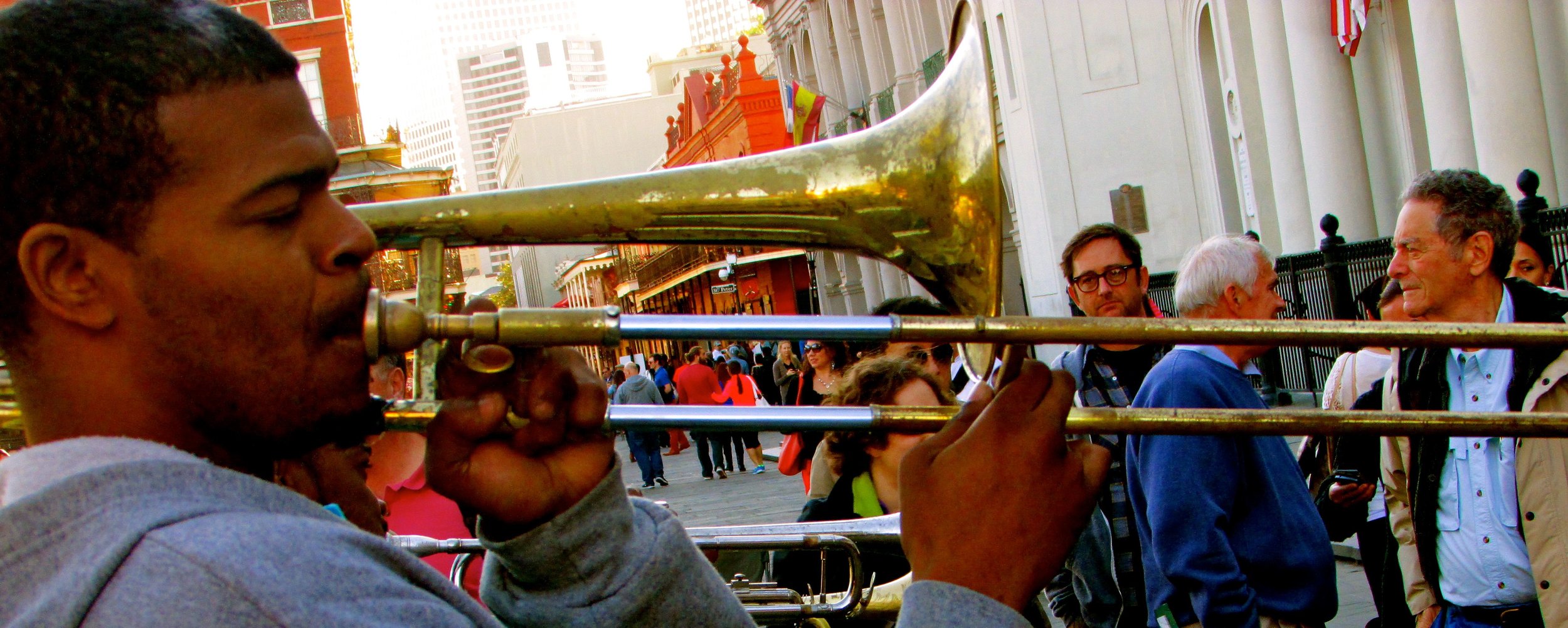 Song: It Ain't My FaultArtist: Dejan's Olympia Brass BrandWriter: Smokey Johnson and Wardell QuezergueRelease: 1964, original releaseSampled By: Silkk the Shocker, It Ain't My Fault, Charge it 2 Da Game (1998). I love that Silkk the Shocker sampled this, as it is a testament to the strong cultural influence of New Orleans.[audio http://blackloveproject.files.wordpress.com/2014/01/01-it-aint-my-fault.mp3]I was first introduced to New Orleans more than ten years ago, when my sister left Atlanta to attend Xavier University. That beautiful Crescent City, with its living culture and magical, almost spiritual pull, will always have a special place in my heart. From the music, to the food, the history and the friendly people, there is not much I don't like about New Orleans. If you choose to only visit the city to drink on Bourbon Street, you should know that you're missing out on so much.We all know the most recent history of New Orleans; the aftermath of Hurricane Katrina, which exposed so much about American society and politics. My sister returned to Atlanta, at the behest of our worried African mother, leaving one hour before the only exit highway closed. Stories of friends floating on mattresses, as their homes flooded. University students and nuns (Xavier is a Catholic university) breaking into dining halls, stealing frozen dough because they had not eaten in days. The people she'd grown to know and the city she'd learned to call home were destroyed by Mother Nature and forsaken by a faulty government. Sons and daughters of this great land were called refugees and looters, and treated as such. Hurricane Katrina outed the rampant racial and socio-economic inequalities of New Orleans and America; birthed from a long standing history of infractions against black civil rights, (Solomon Northup writes of his experience of being sold in New Orleans, in his memoir 12 Years a Slave).Yet and still, that great city shines on. It shines on through the preservation of its cultural history, which cannot be said for many southern cities, that are overgrown with shiny, pretty buildings. You can hear it in the way they talk (baaaybaaay), the syncopated rhythms of every footstep that echoes of spirits past. The music and dance, the beautiful brass and percussion, buck jumping and Indian Krewes and of course, bounce music (rest peacefully, Magnolia Shorty). The food is the proof and legacy of every culture that's ever breathed there; gumbo a direct descendant of the West African okra stew I was raised on, or the beignets and coffee of European lineage. This is New Orleans, wearing the mask of a drunken city, but underneath a rebuilding and resilient one, its culture the foundation. It is a city that opens its arms to those free spirits who search for a place to call home, it is the home for those who have wandered only to be found in New Orleans, Louisiana.
Song: It Ain't My FaultArtist: Dejan's Olympia Brass BrandWriter: Smokey Johnson and Wardell QuezergueRelease: 1964, original releaseSampled By: Silkk the Shocker, It Ain't My Fault, Charge it 2 Da Game (1998). I love that Silkk the Shocker sampled this, as it is a testament to the strong cultural influence of New Orleans.[audio http://blackloveproject.files.wordpress.com/2014/01/01-it-aint-my-fault.mp3]I was first introduced to New Orleans more than ten years ago, when my sister left Atlanta to attend Xavier University. That beautiful Crescent City, with its living culture and magical, almost spiritual pull, will always have a special place in my heart. From the music, to the food, the history and the friendly people, there is not much I don't like about New Orleans. If you choose to only visit the city to drink on Bourbon Street, you should know that you're missing out on so much.We all know the most recent history of New Orleans; the aftermath of Hurricane Katrina, which exposed so much about American society and politics. My sister returned to Atlanta, at the behest of our worried African mother, leaving one hour before the only exit highway closed. Stories of friends floating on mattresses, as their homes flooded. University students and nuns (Xavier is a Catholic university) breaking into dining halls, stealing frozen dough because they had not eaten in days. The people she'd grown to know and the city she'd learned to call home were destroyed by Mother Nature and forsaken by a faulty government. Sons and daughters of this great land were called refugees and looters, and treated as such. Hurricane Katrina outed the rampant racial and socio-economic inequalities of New Orleans and America; birthed from a long standing history of infractions against black civil rights, (Solomon Northup writes of his experience of being sold in New Orleans, in his memoir 12 Years a Slave).Yet and still, that great city shines on. It shines on through the preservation of its cultural history, which cannot be said for many southern cities, that are overgrown with shiny, pretty buildings. You can hear it in the way they talk (baaaybaaay), the syncopated rhythms of every footstep that echoes of spirits past. The music and dance, the beautiful brass and percussion, buck jumping and Indian Krewes and of course, bounce music (rest peacefully, Magnolia Shorty). The food is the proof and legacy of every culture that's ever breathed there; gumbo a direct descendant of the West African okra stew I was raised on, or the beignets and coffee of European lineage. This is New Orleans, wearing the mask of a drunken city, but underneath a rebuilding and resilient one, its culture the foundation. It is a city that opens its arms to those free spirits who search for a place to call home, it is the home for those who have wandered only to be found in New Orleans, Louisiana.